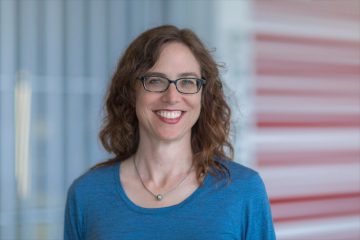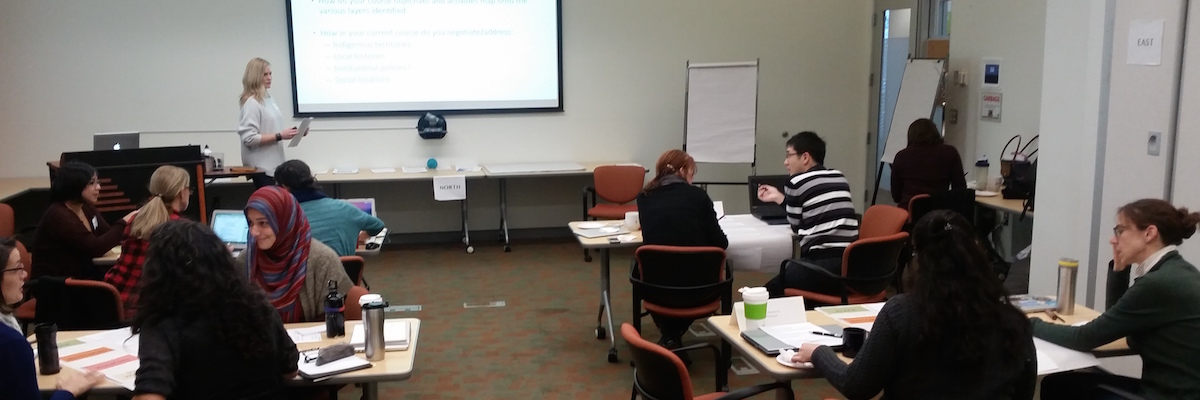
We recently interviewed Christina Hendricks, the Deputy Academic Director, Centre for Teaching, Learning and Technology, on integrating Indigenous perspectives, equity and inclusion, in teaching and learning.
Christina Hendricks contributes to the administrative and academic leadership of CTLT. She is also a Professor of Teaching in Philosophy, teaching courses and helps to organize the TA training program.
“Equity, to me, is a basic part of teaching and learning well—making sure that the learning experience is as equitably effective for all students as possible. This is a goal I keep striving for and always have more to do. When I moved to British Columbia in 2004 from the U.S. I was very interested to learn about the land on which I work and its status as the traditional, ancestral, and unceded territory of the Musqueam people. It just makes sense to me that if I am teaching and learning on this land, I should learn more about Indigenous perspectives on what I am teaching, and Indigenous ways of knowing.” (Christina Hendricks)
Tell us a little bit about yourself and your interest in equity, diversity, and integrating Indigenous perspectives into teaching and learning. How did you become engaged with this topic? Why is it important to you?
I have been working to make my courses as inclusive as I can, for many years. Equity, to me, is a basic part of teaching and learning well—making sure that the learning experience is as equitably effective for all students as possible. This is a goal I keep striving for and always have more to do. When I moved to British Columbia in 2004 from the U.S. I was very interested to learn about the land on which I work and its status as the traditional, ancestral, and unceded territory of the Musqueam people. It just makes sense to me that if I am teaching and learning on this land, I should learn more about Indigenous perspectives on what I am teaching, and Indigenous ways of knowing. I took a full-day workshop on incorporating Indigenous content and perspectives into courses last year, and I am working on doing so.
You recently facilitated a session on “Introduction to Designing Inclusive Learning and Teaching Environments”, and participated in the Classroom Climate series on “Integrating Indigenous Content into your Course Design.” What were some of your key reflections coming out of these workshops? How have you been bringing some of your take-aways into your own teaching?
The session on “Designing Inclusive Learning and Teaching Environments” focused in part on accessibility issues faced by students with disabilities. We were trying to combine principles from Universal Design for Learning with broader ideas of inclusivity in teaching and learning. Through discussions with Afsaneh Sharif at CTLT, as well as my own research, I have learned a great deal lately about how to make materials that I post on the internet more accessible to students with visual or auditory impairments. There are also numerous things one can do when speaking in front of a class to make that more accessible as well. A few of us at CTLT are putting together a two-page quick guide to accessibility in web materials that will be published soon on the CTLT website, and I hope we can follow that with accessibility tips for speaking in face-to-face class meetings.
After participating in the “Integrating Indigenous Content into your Course Design” session I spent a good deal of time researching, and asking colleagues, about texts I could use for my Introduction to Philosophy course that talk about protests and civil disobedience from an Indigenous perspective. I found some good discussion of this in a book by UBC faculty member Glen Coulthard, and I thought that worked very well for my course. I am doing different topics in my next Introduction to Philosophy course, and am again seeking texts with Indigenous perspectives to include.
What are some areas you would like to explore in your new role as the Deputy Academic Director?
I would like to continue to work on inclusivity, broadly construed, as described above. In particular I would like to encourage faculty to make accessibility for students with disabilities more of a priority in their courses. Quite often, this makes materials and presentations better for many students, so in doing so one is providing greater benefits than one might realize.
In addition, I have been active in efforts and events around open education at UBC, as part of an informal “Open UBC” working group made up of students, librarians, staff, and faculty. in the past few years we have updated the open.ubc.ca website, facilitated numerous workshops, hosted invited speakers, facilitated an open online course, and more. I look forward to continuing work with this very productive and effective group.
I am also very interested in working with our programs that involve faculty connecting to CTLT in a longer way than through brief workshops, such as through the SoTL Seed Fund and the Faculty Associates Program. I would like to think through and do some research on how we might promote more of a cohort and community amongst the faculty participating in those programs.
These are just a few of the things I’m interested in!
Any fun facts you’d like to share about yourself?
I have recently been trying to practice sketchnoting: doing visual notes with drawn figures and icons in addition to words. I find that it helps me to distill a lecture or conference session down to a few main points I want to focus on because there’s not time to write everything down in this format. And by doing this, it helps me remember the content better than if I use my computer and take more verbatim notes. It is challenging to do well, though, and so I take every opportunity I can to practice. Sometimes I share those notes on Twitter or my blog.
